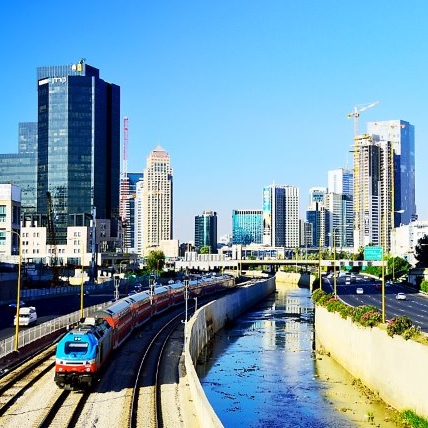click to dowload our latest edition
CLICK HERE TO SUBSCRIBE TO OUR NEWSLETTER


Published
6 years agoon
By
adminGUS SILBER
I was riding my rent-a-bicycle along the promenade in the direction of Yafo, with the lull of the Mediterranean on one side and the throng of skyscrapers on the other, when I began thinking to myself: “Tel Aviv, how do I love thee? Let me count the ways.”
But I am a Joburger, and I love Joburg too, and my thoughts turned as the wheels turned to the things my home city can learn from this twin city of my heart and soul. For one thing: how to encourage people to bicycle.
Yes, we have cycle lanes in Joburg, clearly demarcated by pictograms of bicycles and hemmed in by rows of little slats that look like dogs’ teeth. So, of course, we park our cars in these lanes, on the not unreasonable assumption that you would have to be crazy to cycle in the Joburg traffic in the first place.
In Tel Aviv, you can rent your three-speed Tel-O-Fun bike from more than 200 computer-controlled stations across the city, and drop it off at another station when you’re done. It’s a lot healthier than hailing an Uber.
But the hallmark of a well-designed, human-friendly city is that you can just as happily traverse it on two feet as on two wheels – and here, too, Tel Aviv has much to teach us.
I dock my bike at the beachfront and I stroll, amble and dawdle my way down the narrow streets of Neve Tsedek, the Bohemian neighbourhood that brings Melville to mind. And then the world opens up, like a river to a jungle explorer, and I am standing on Sderot Rothschild.
There’s an ultra-wide boulevard with three lanes: two for vehicular traffic, and one, spanning the middle, fringed by shady trees with a carpet of grass, for the shared use of cyclists and pedestrians only.
You are in the hooting, throbbing thick of the city, the “balagan” of chaos, to use the Israeli term, and yet you are blissfully removed from it, free to wander, or sit on a bench and wonder, or pause at a coffee-kiosk and watch the parade pass you by.
We have nothing like this in Joburg save for short, paved stretches in the gold-mining district of the CBD, between the statue of Mandela the Boxer on Fox Street and the old Stock Exchange on Hollard. But in Sandton, the richest pocket of urban real estate in Africa, good luck if you even want to find a piece of pavement to rest your feet on outside the mall.
To be fair, we do have more and more places to loiter for coffee in Joburg, which is another must-have for any city where progress and the good life are on the brew. In Tel Aviv, where almost everyone looks fit, healthy and toned, the greater temptation is to pick up a freshly pressed fruit juice from a ubiquitous street stall. But let’s move on, because the terminus of our happy schlepping is a place called Habima Square.
Here, at the intersection of Dizengoff, a central pool reflects the desert-coloured architecture of theatre and art, in a public space where kids frolic among the flowers, buskers busk, and visitors like me just stand and stare and soak it all up.
The lesson of Tel Aviv is that a city must not be built just to accommodate the bustle of trade; it must be shaped to embrace our better angels, the guardians of culture and the creative spirit.
In the Florentin district, opposite the tiny Ahavat Chesed, the Synagogue of Loving Kindness, with its crumbling masonry and its elbow-jointed menorah like a TV aerial on top, I stop to watch two women playing a jazz riff in a doorway, one on the bongo drums and one on the sax.
I have come to this gritty, semi-industrial neighbourhood to see the street art, an inside-out gallery of vibrant, witty works that brighten the walls and the roller-doors of the auto-shops.
This is not gentrification; it is co-creation, the forging of a community where small businesses and boutiques and coffee shops work together in a cacophony of clattering and hammering and hissing, whether from the nozzle of a tyre-fitment pump or an aerosol spray-can or a cappuccino frothing machine.
And so I wander around the city on cycle, on foot, counting the ways – all the while taking inthe free public WiFi, the curvaceous Bauhaus buildings, the abundance of multicultural eateries, the Shuk HaCarmel in the pre-Shabbat rush, the hippies hypnotically pounding their djembes on Drum Beach at twilight, the old stone walkways and the little fishing harbour of Yafo. Throughout the sightseeing there is one thing, above all else, that sums up Tel Aviv and makes me think of my own city far away.
It’s the carefree attitude, the aura of cool confidence, the shared sense of civic pride and belonging, that I call Tel a-Joie de Vivre – the exultation of life – as you are happy to live it, in a place you are happy to call home.
